There are several historic buildings in Manisa and the sights are clustered within walking distance of each other, so it is possible to see them all on foot.
We arrived in Manisa in the morning on the overnight bus from Adana and then set off to explore. Here are some of the best places to visit and things to do in Manisa.
- About Manisa
- Manisa Hükümet Mansion (Manisa Hükümet Konağı)
- Hatuniye Mosque (Hatuniye Camii)
- Kurşunlu Han
- Cumhuriyet Baths (Cumhuriyet Hamamı)
- Çeşnigir Mosque (Çeşnigir Camii)
- Muradiye Mosque
- Sultan Mosque
- Sultan Baths (Sultan Hamamı)
- Sultan Park
- Tomb of Saruhan Bey (Saruhanbey Türbe)
- Manisa Great Mosque (Ulu Mosque)
- Niobe Weeping Rock
- İvazpaşa Mosque (İvazpaşa Cami)
- Yeni Alaca Hamamı
- Manisa Mevlevihanesi
- Accommodation in Manisa
- Dining in Manisa
About Manisa
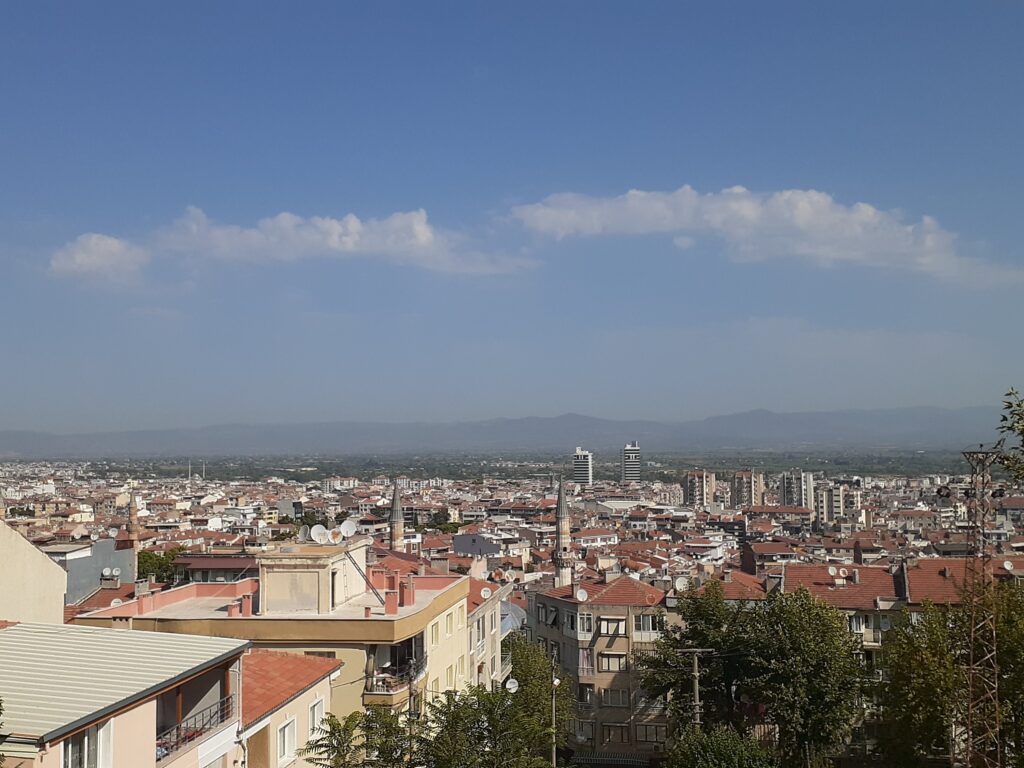
Manisa is the capital of the province of Manisa in the Aegean Region, located about 40 km north-east of the metropolis of Izmir. Formerly known as ‘Magnesia’, the city has a Turkish cemetery and sanctuary dating back to the 14th century. Later, during the Ottoman Empire, the city already extended to the periphery of the plain, but has been increasingly expanding in recent years. The population is approximately 1.43 million (2021).
The main tourist attractions in Manisa are concentrated in the city centre and are easy to visit on foot.
Manisa Hükümet Mansion (Manisa Hükümet Konağı)
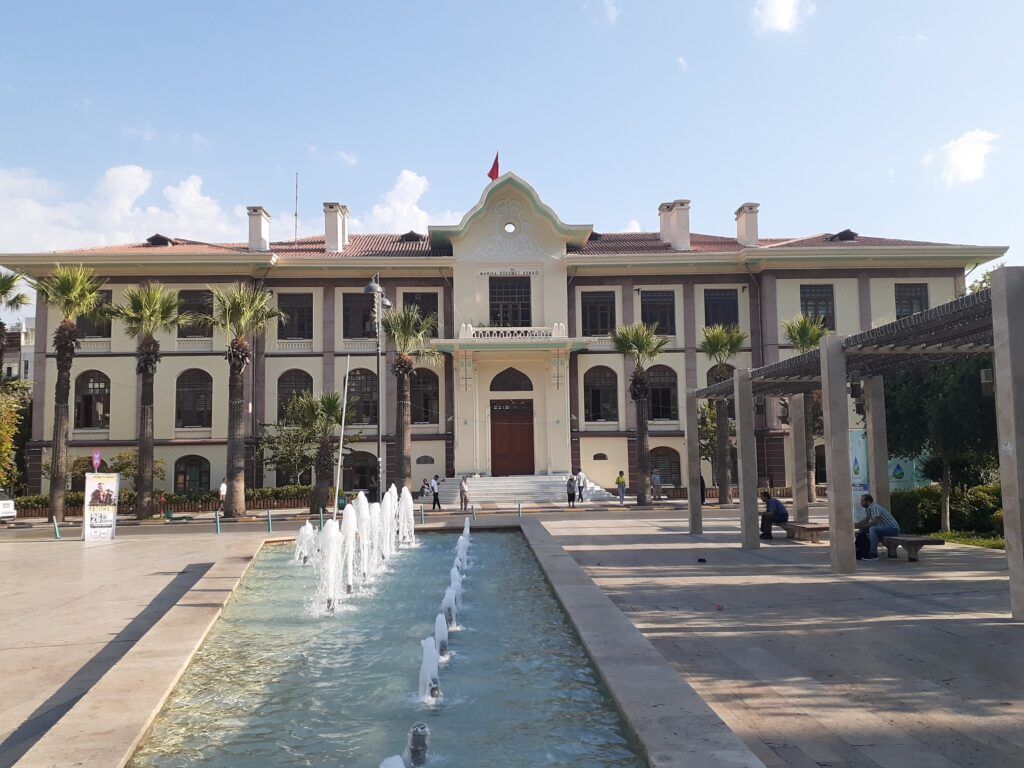
A Manisa landmark in front of the square in the city centre, built in 1908 and completely burnt down in 1922, but restored in 1925 and again in 1999-2000. It was a little disappointing that the square in front of the building was used as a car park. It was somewhat difficult to photograph without cars showing up in the picture! The view from the fountain on the other side of the building was also spectacular. It is lit up at night.
Hatuniye Mosque (Hatuniye Camii)
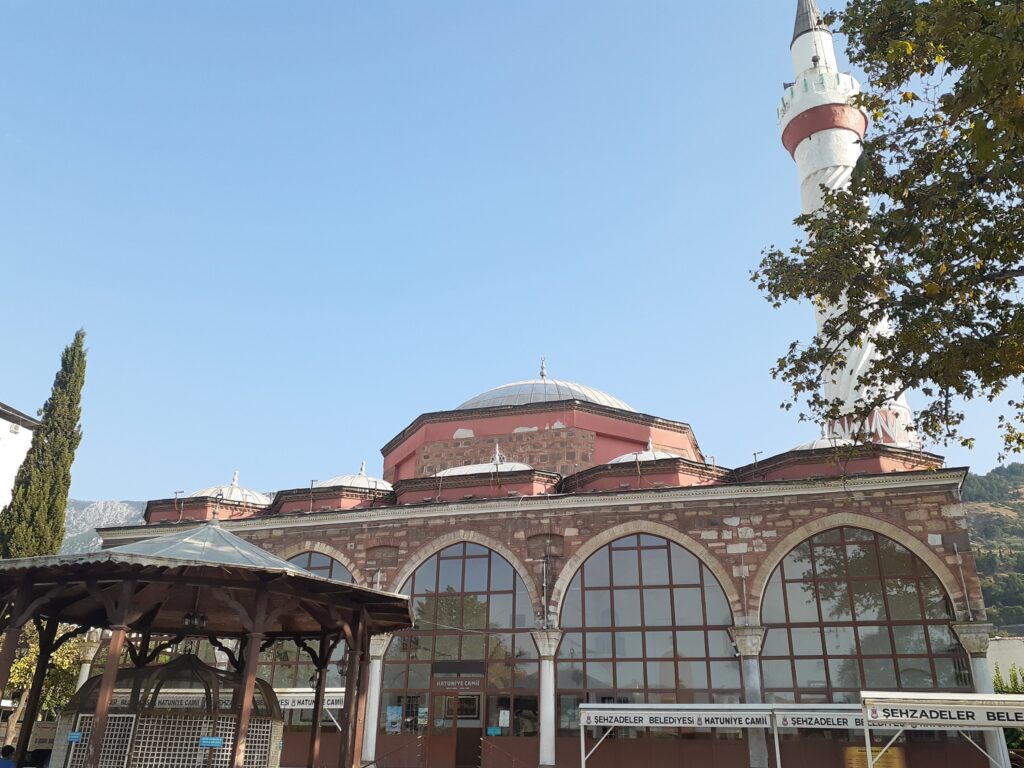
Built in 1488 as part of a complex by Husnuşa Sultan, wife of Beyazid II. The complex consisted of a mosque, madrasah, poorhouse and primary school, but the madrasah and poorhouse were destroyed and lost during the War of Independence.
The main building of the mosque has a single minaret in the form of a dome over octagonal pillars. The pink mosque walls with large glass windows are impressive.
Kurşunlu Han
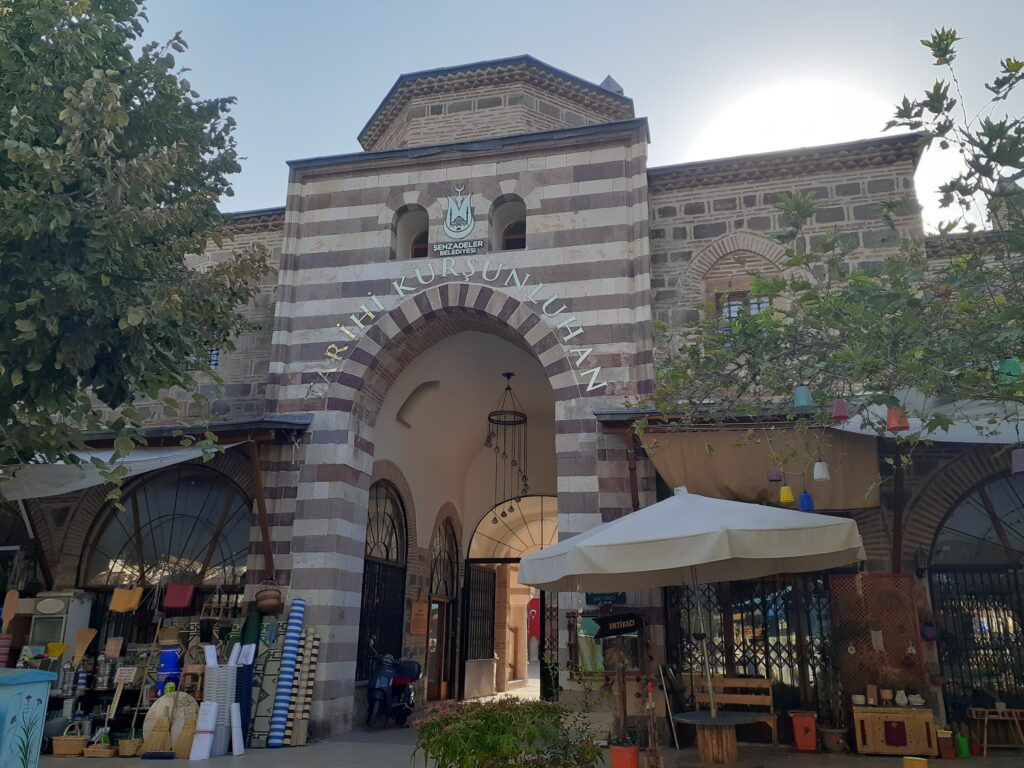
Built in the Manisa shopping area, it used to function as an inn. The specific date of construction is not clear, but it is known to be from the same period as the Hatuniye mosque.
The two-storey, brick building collapsed during the 1611 earthquake and was extensively restored in 1643 and 1677. The original design plan seems to have been significantly altered due to other repeated restorations. It is currently used as a student dormitory.
Cumhuriyet Baths (Cumhuriyet Hamamı)
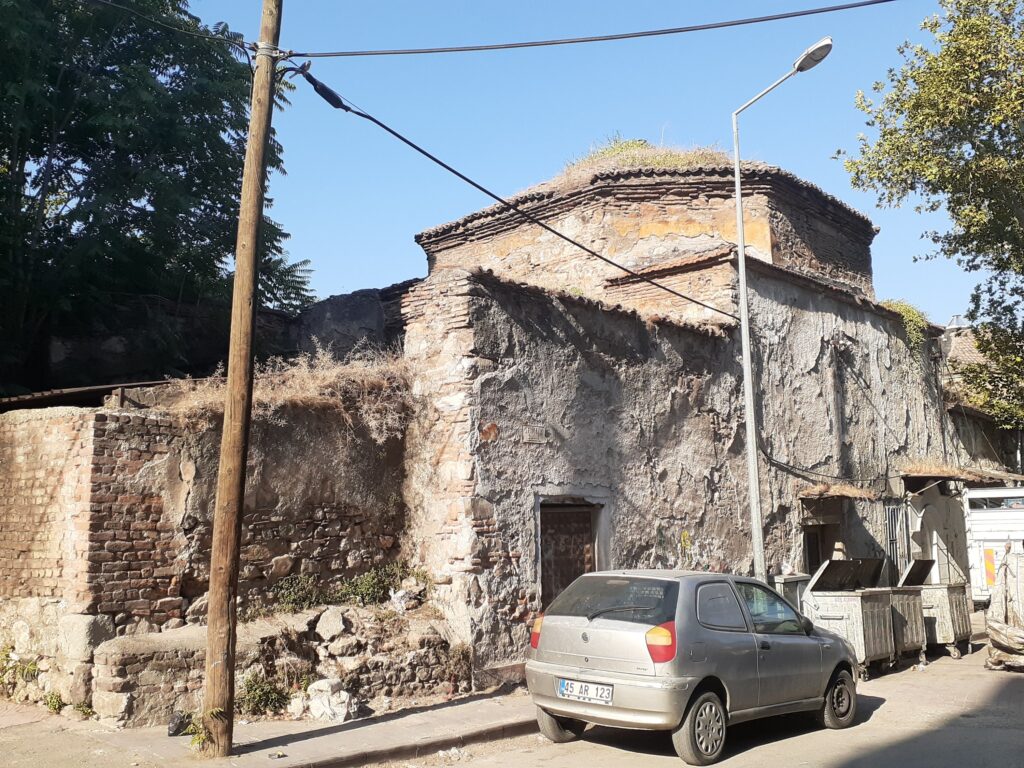
This bathhouse was built in 1574. It is an Ottoman bath building, made of roughly cut stone and flat bricks, with separate double baths for men and women. The walls look quite old on the outside and look as if they are about to peel off, but it’s still in use today.
Çeşnigir Mosque (Çeşnigir Camii)
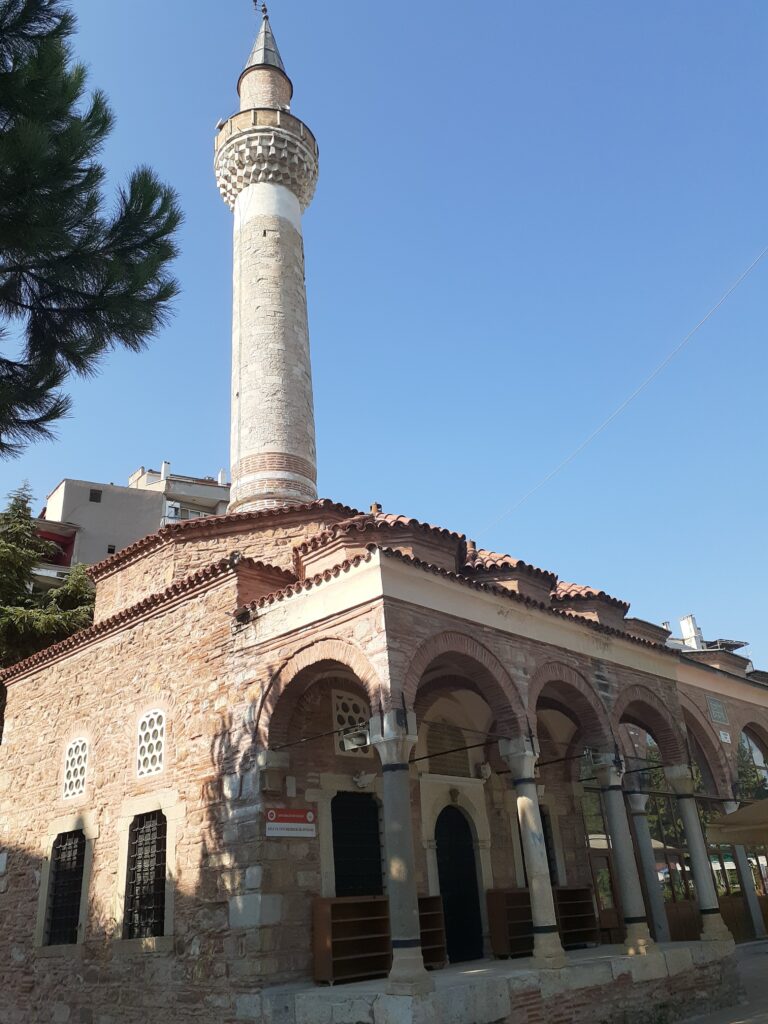
Built in 1474, this is one of the oldest mosques in the city which also housed a library. The site has a park-like atmosphere with green spaces and many plants.
Muradiye Mosque

This mosque dates from the 16th century Ottoman Empire. Located on the roundabout in the centre of Manisa Street, diagonally opposite the Sultan Mosque.
The mosque is built of sandstone and has a colonnaded entrance with five small domes and two minarets. It was built as part of a complex that included a madrasa and an imaret (public charity kitchen), and is one of the few historic buildings to have survived the vandalism that accompanied the withdrawal of the Greek army in 1922. The Imaret is now used as a museum.
Sultan Mosque
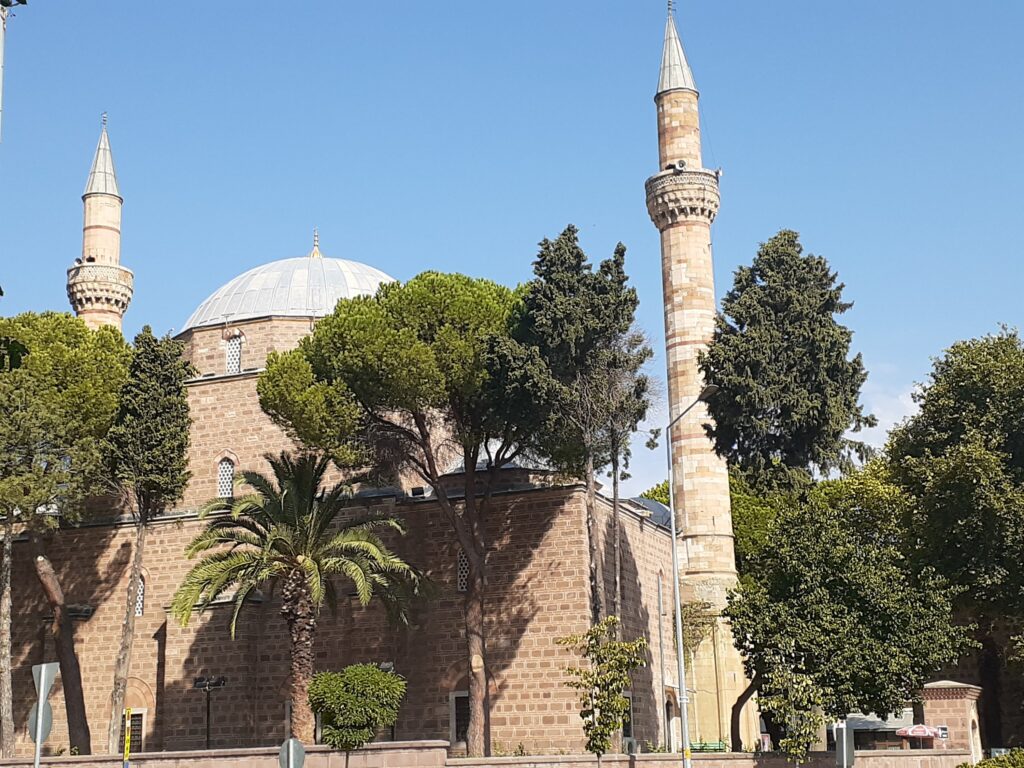
This Ottoman mosque was built in the 16th century. It is diagonally opposite the Muradiye Mosque and can be seen from both sides.
The complex consisted of a mosque, madrasah, hospice and primary school, and also had a baths and medical centre. The mosque has a central dome and two minarets.
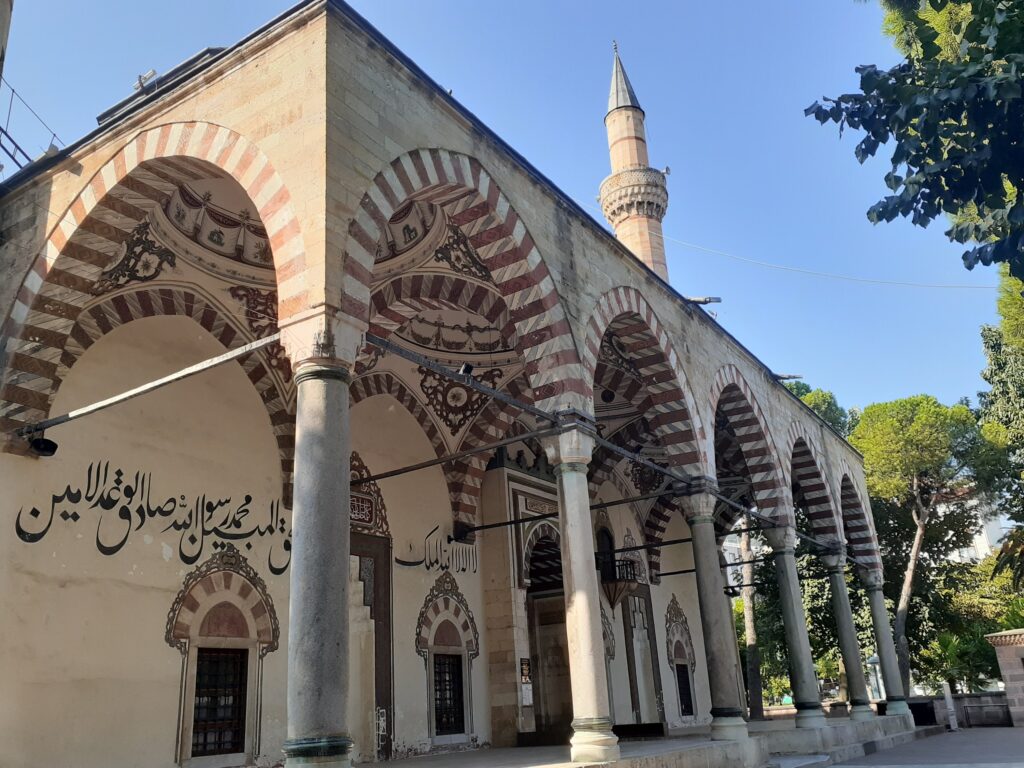
The entrance arch has a beautiful red and pale yellow striped pattern, and the inside of the dome is also ornately painted. The calligraphy on the walls makes it one of the most decorative mosques in Manisa.
Sultan Baths (Sultan Hamamı)
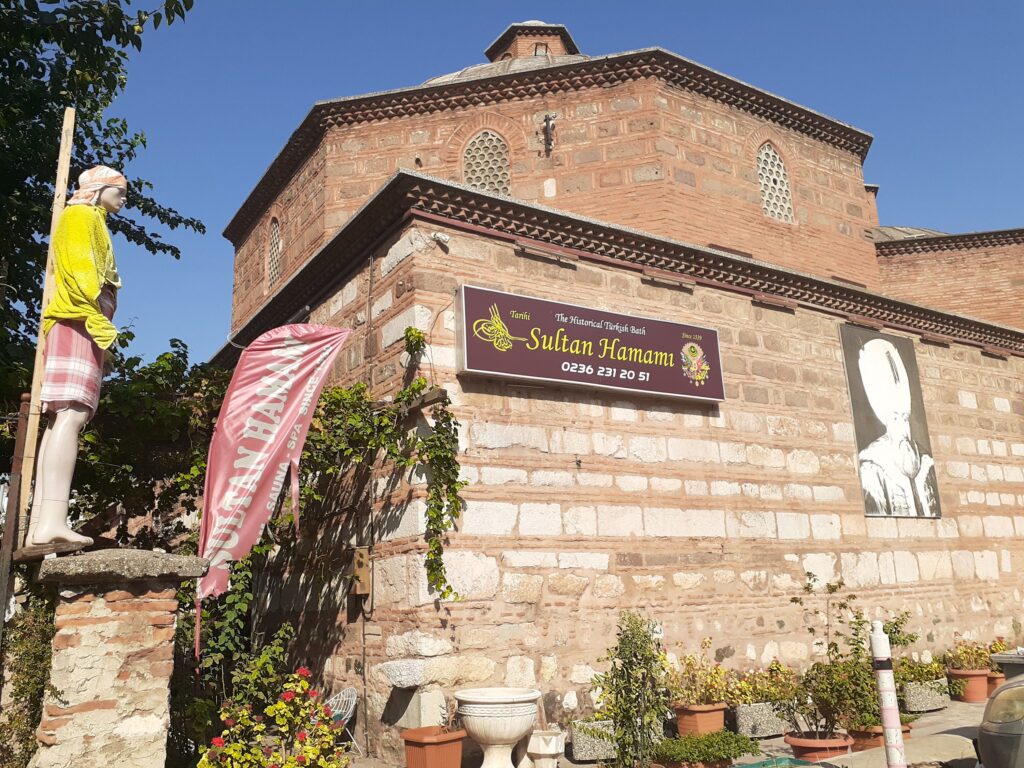
This bathhouse was built in 1538, right next to the Sultan Mosque. It is a double bath designed symmetrically for men and women, with the women’s baths to the north and the men’s baths to the south.
Sultan Park
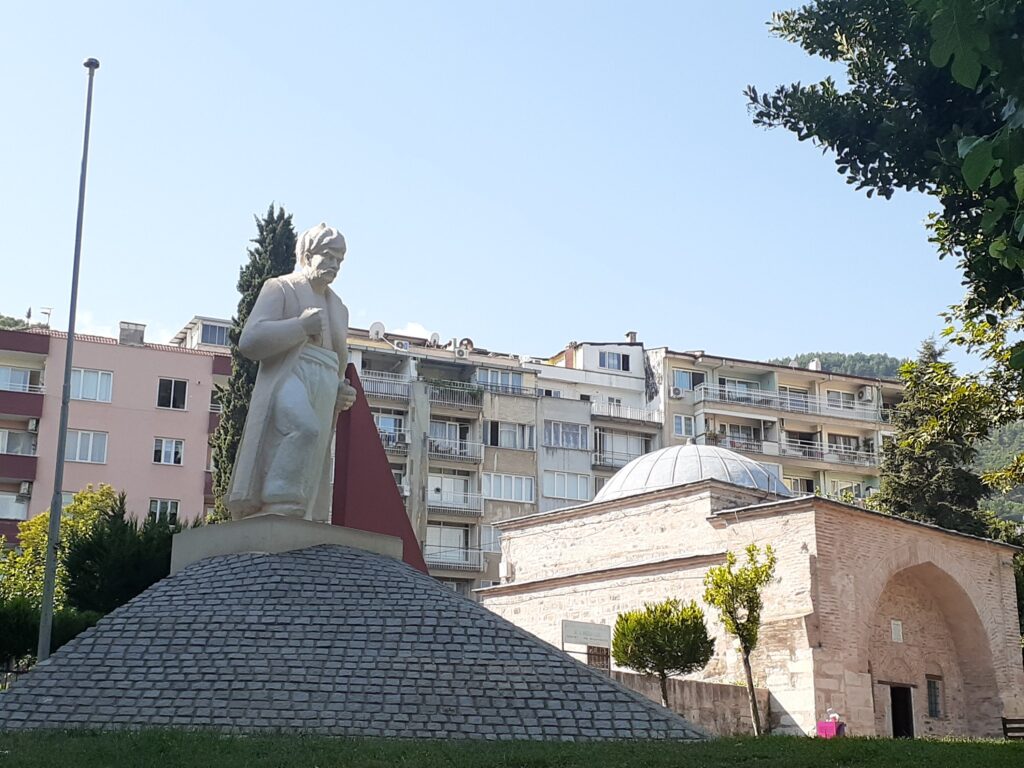
Located at the roundabout where the Sultan Mosque is located, next to the Muradiye Mosque. It is a lush green space on a busy main road. The tomb of Sarhan Bey is located on the site.
Tomb of Saruhan Bey (Saruhanbey Türbe)

This mausoleum is located on the grounds of Sultan Park. The specific date of construction is not clear. It was built of roughly crushed stones, bricks and materials collected from the surrounding ancient buildings. The statue of Saruhanbey was built in 1974.
Manisa Great Mosque (Ulu Mosque)
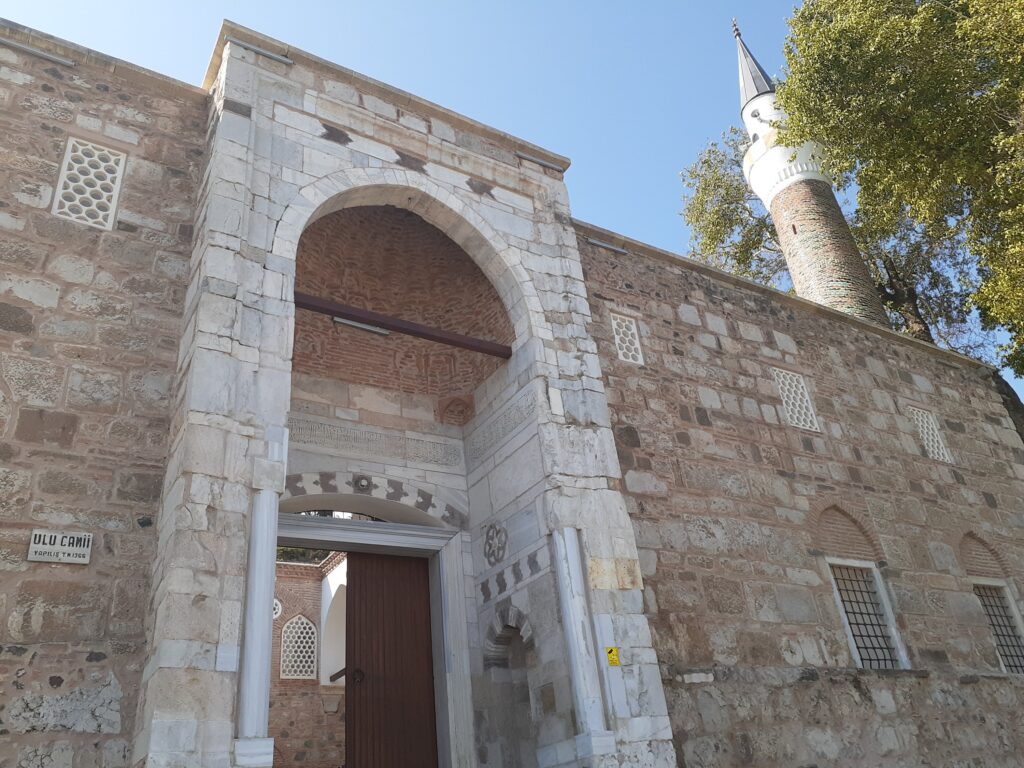
Located on a slope overlooking the city of Manisa, north of Mount Sipil, this mosque was completed in 1367. After passing through the huge façade, there is a courtyard with a fountain.
The mosque has been renovated and is new and bright. It is situated on top of a hill and has a beautiful view overlooking the city of Manisa.
Niobe Weeping Rock
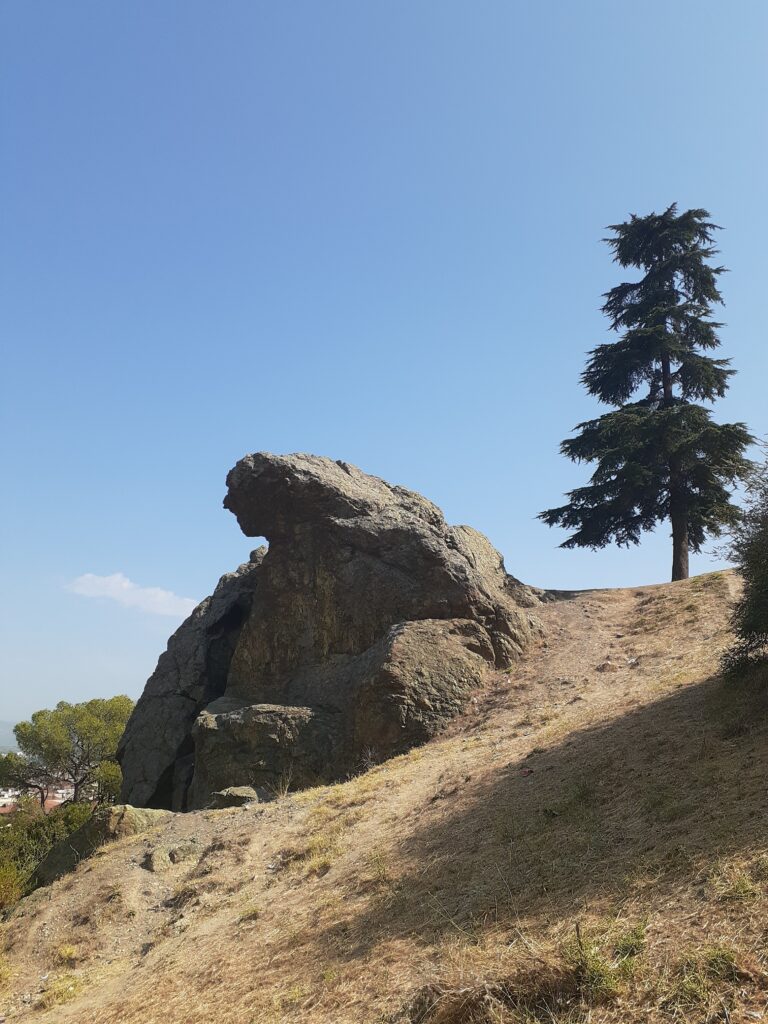
This rock, with an open-air theatre next to it, is a porous limestone rock that was associated with Niobe, the most tragic figure in Greek mythology. It looks like a woman weeping when water seeps in after a rainfall.
İvazpaşa Mosque (İvazpaşa Cami)

Built in 1484, of hewn stones and bricks of various sizes and shapes, using masonry techniques prevalent in the early Ottoman period.
Although it is a small mosque, it contains many beautiful elements, such as arches decorated with two-coloured stripes and vertically striped minarets. We also thought the riverside downtown Turkish atmosphere around the mosque was lovely.
Yeni Alaca Hamamı
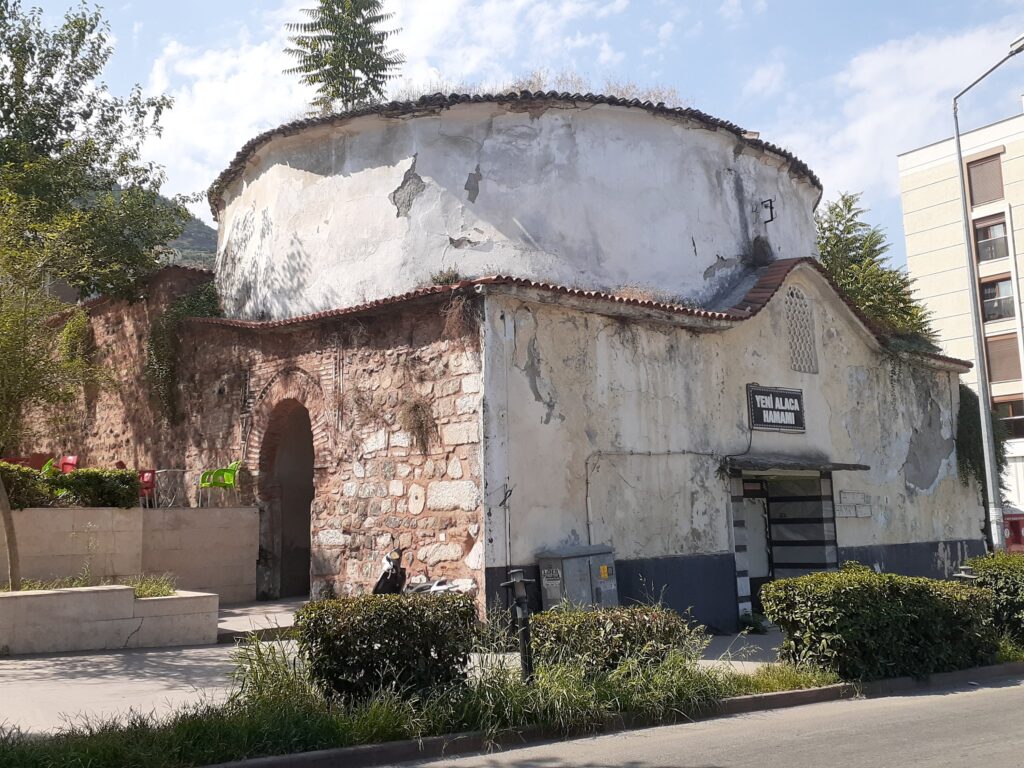
Built by Hamzabey in the 15th century. It is a double hammam with the male wing on the east side and the female wing on the west side of the building stretching north-south. It was built from stone and brick, but is now in severe disrepair and in need of repair.
Manisa Mevlevihanesi
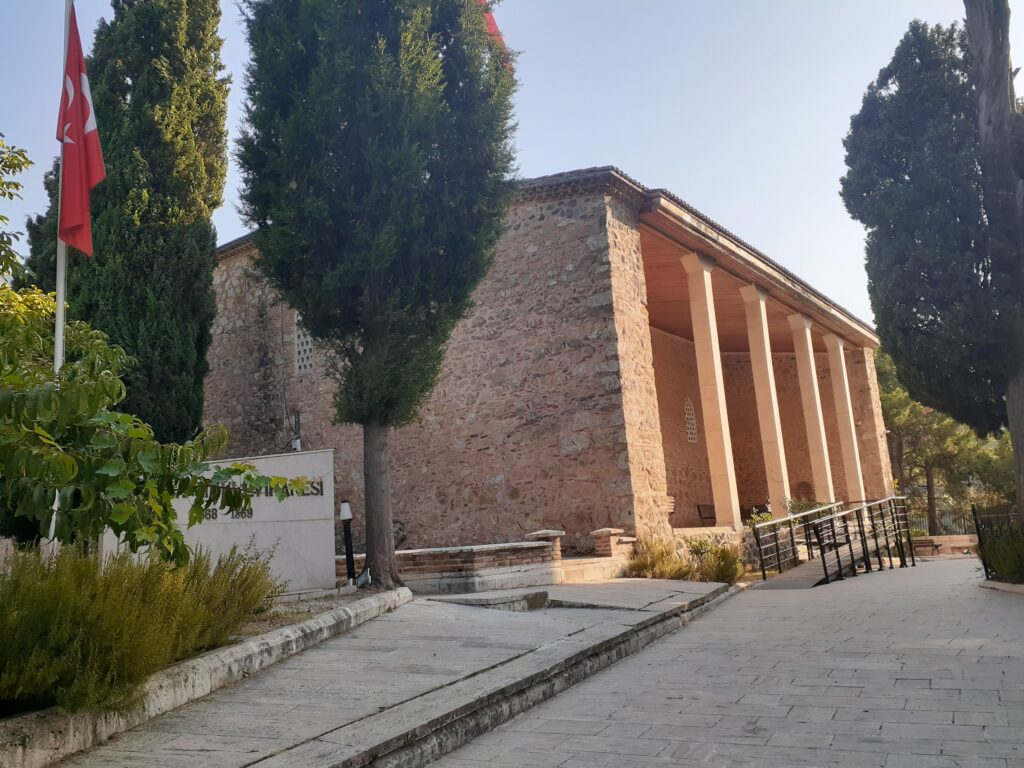
Built in 1369 and restored several times, it is now used as an ethnographic museum by the Manisa Regional Centre for Turkish Historical and Cultural Studies and Applications, although its role was reduced in the 19th century when a new Mevlevi Lodge was opened in the city centre.
There are several teahouses in the vicinity where visitors can enjoy a drink with a view of the city.
Accommodation in Manisa
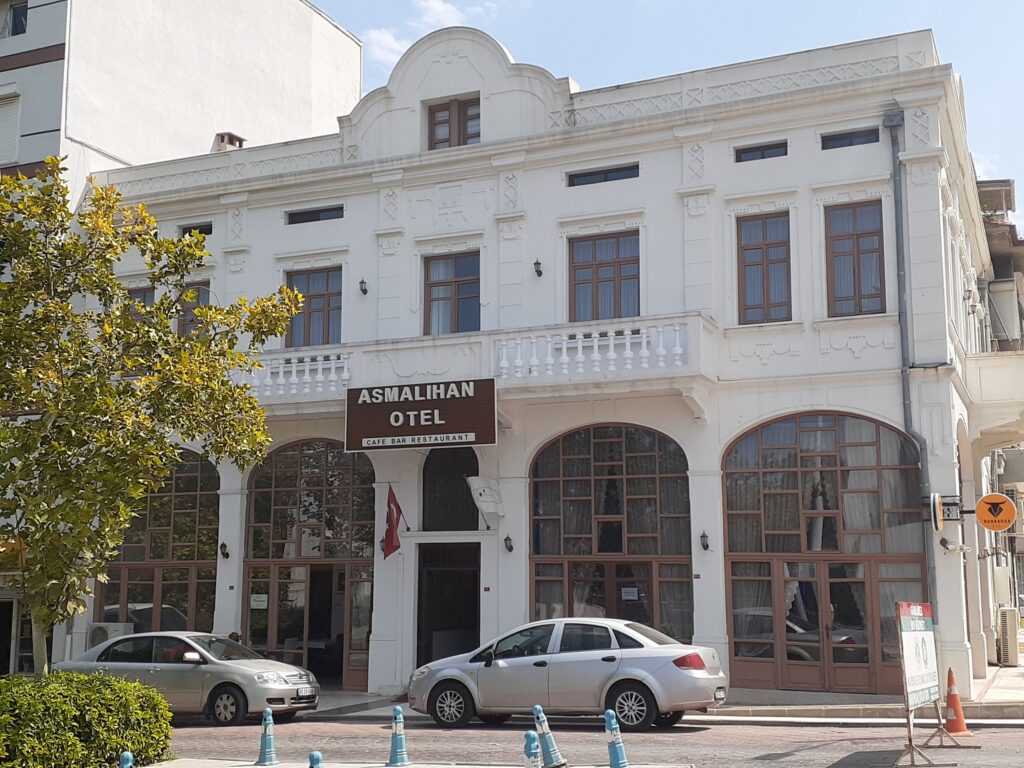
In Manisa we stayed at the Asmalıhan Otel&Restoran&Cafe. We walked in and got a double room with breakfast for 1,000 TL. A detailed review can be found on Google Maps.
Dining in Manisa
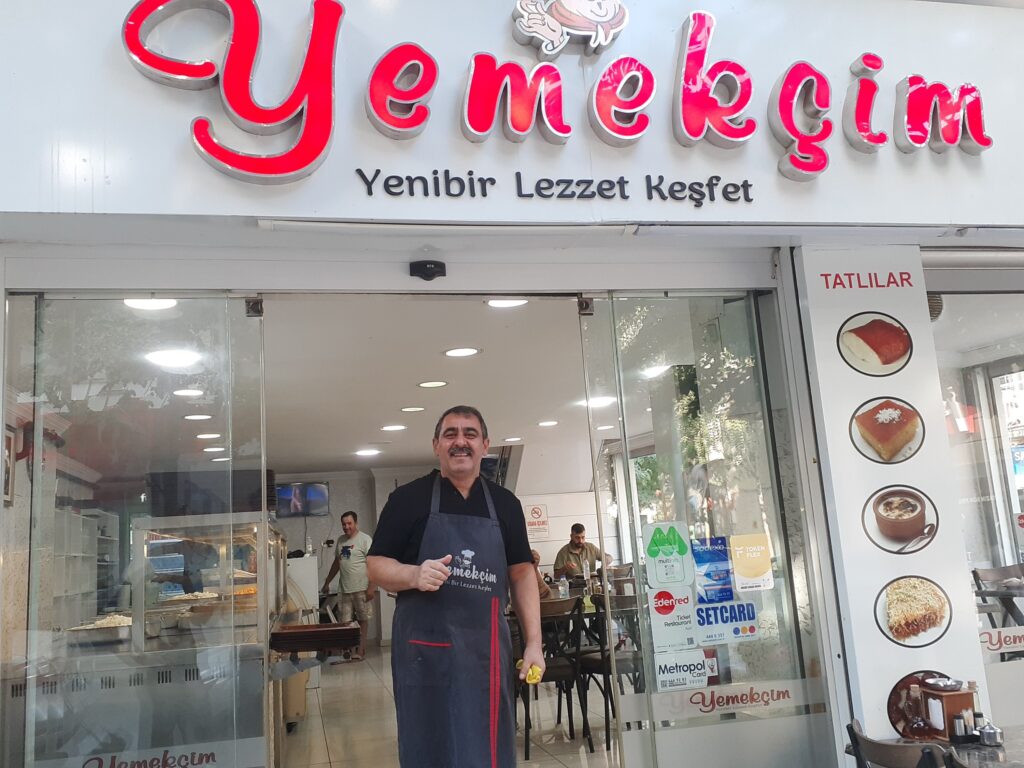
Manisa has a very large number of restaurants and cafés, so you should have no problems finding places to eat.
We were very hungry and had an early dinner at a ready-made ready-to-eat restaurant. On the corner of the downtown area, Yemekçim was already bustling with a few customers.
Delicious and reasonably priced. The staff were also pleasant. For more information, see Google Maps review.



Comment